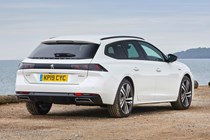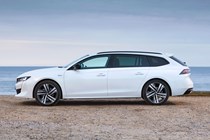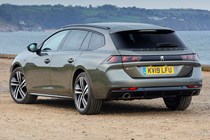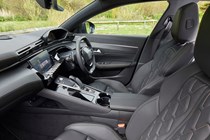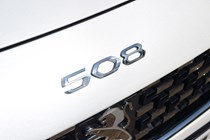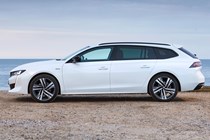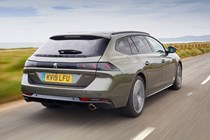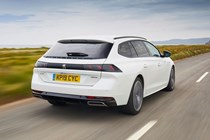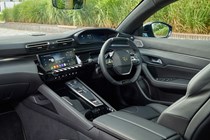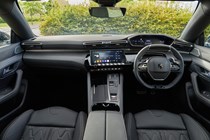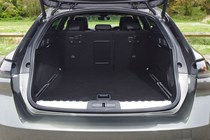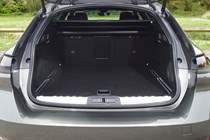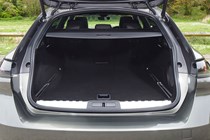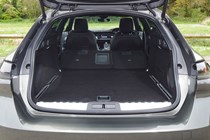
Peugeot 508 SW long-term test
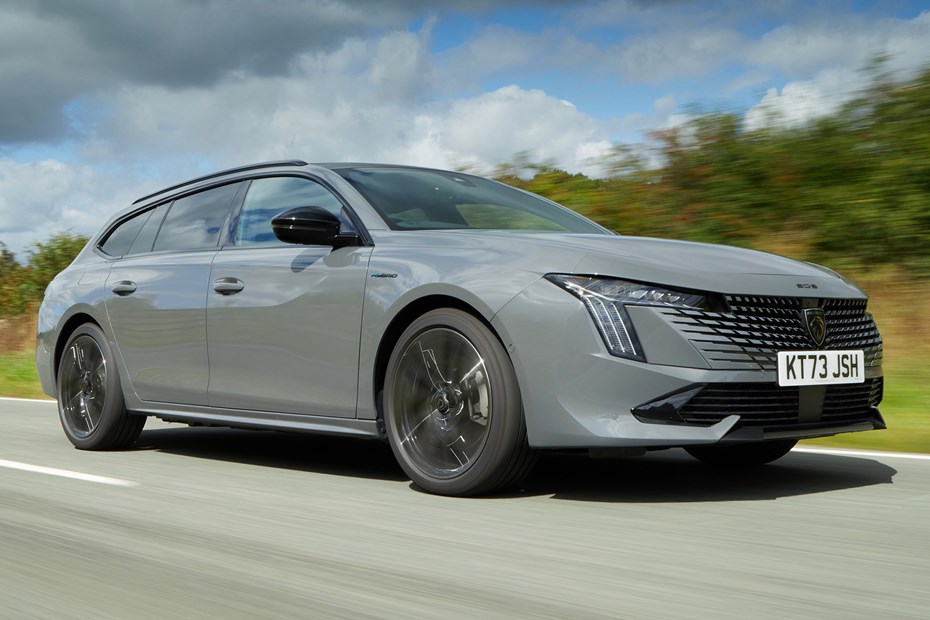
Looking for a practical family estate car with excellent potential fuel economy and striking good looks? We’re running a Peugeot 508 SW with the plug-in hybrid powertrain to see if it’s a viable alternative to the traditional premium choices from Audi, BMW and Mercedes-Benz. What’s more, does a plug-in hybrid powertrain work with James’ lifestyle? Read on to find out.
Reports by James Dennison
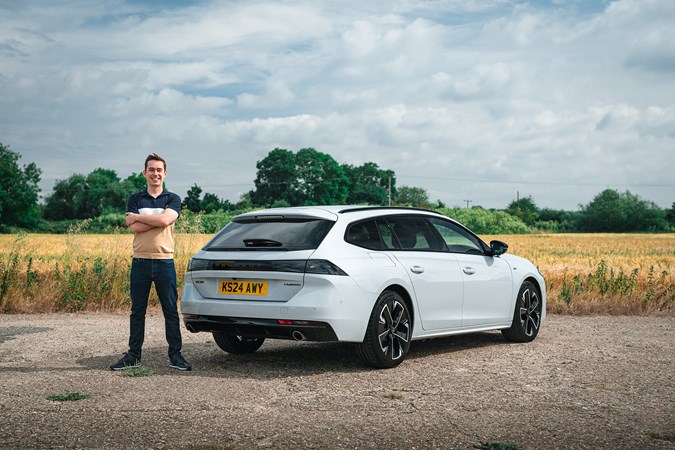
Update 1: Welcome
Find out what spec we’ve got on our Peugeot 508 SW long-termer
Welcome to the Peugeot 508 SW. I like an estate car, so this should suit me very nicely, but I’m also keen to see whether I will enjoy the 1.6-litre plug-in hybrid powertrain more than I did in my existing Peugeot 408. You see, I don’t have a home charger and I’m convinced that in order to get the most out of a PHEV, you really need one – even more so than with an EV.
But all of that is to come. First let’s take a look at exactly what I’ve got with this Okenite White Peugeot 508 SW. The base 508 SW (with the 1.2-litre three-cylinder petrol engine) starts at just over £35k, while the plug-in hybrid bumps this up considerably to £45k. However, with options, my 508 SW (in top-spec GT trim) comes in at – wait for it – a smidge over £50,000… Yep, £50k for a Peugeot estate.
Even with the price of cars increasing, that’s a lot of cash and it puts it squarely in the bracket of the BMW 3 Series Touring and the Audi A4 Avant, not to mention the VW Passat Estate and Skoda Superb Estate. SUVs might be taking over the world, but that doesn’t mean there’s no longer healthy competition in the estate car market.
So what can my particular 508 SW offer? Well, I’ve got a 1.6-litre turbocharged petrol engine 181hp and 300Nm of torque. This sends power to the front wheels via an e-EAT 8-speed automatic transmission. Complementing this is a 12.4kWh battery attached to an electric motor that combines with the petrol engine to deliver total outputs of 225hp and 360Nm of torque, with a claimed all-electric range of between 34 and 42 miles.
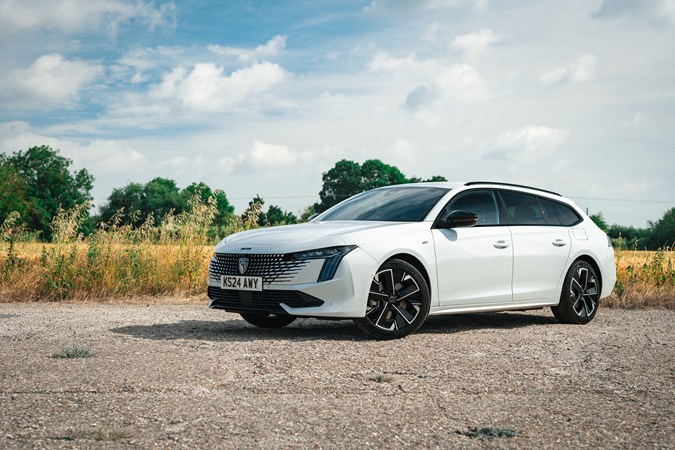
My car is finished in top-spec (discounting the performance PSE variant) GT trim and as such includes equipment such as 18-inch Epherra alloy wheels, adaptative cruise control with stop and go function, a 360-degree camera and heated front seats. Nice. What’s more, I’ve also got the following options fitted:
- Okenite White metallic paint (£650)
- Smart electric tailgate (£425)
- Focal premium speaker system with wireless smartphone charging (£900)
- 7.4kW monophase on-board charger (£400)
Of these four options, there’s only one that I’m convinced by thus far. The metallic paint is nice but hard to keep clean, the smart tailgate isn’t essential and the premium speaker system doesn’t feel that punchy. However, the 7.4kW on-board charger cuts battery replenishment times from 3hr 25 mins to 1hr 45 mins.
First impressions of the 508 SW are generally positive. I think it looks fantastic (the prettiest estate car on sale today?), the motorway cruising manners are agreeable and it’s very practical. Downsides include the 1.8-tonne weight (it feels very heavy in the corners, plus I’m convinced it doesn’t steer as nicely as my old 408) and the electric range maxing out at 26 miles, rather than a number beginning with 3. Hopefully this improves.
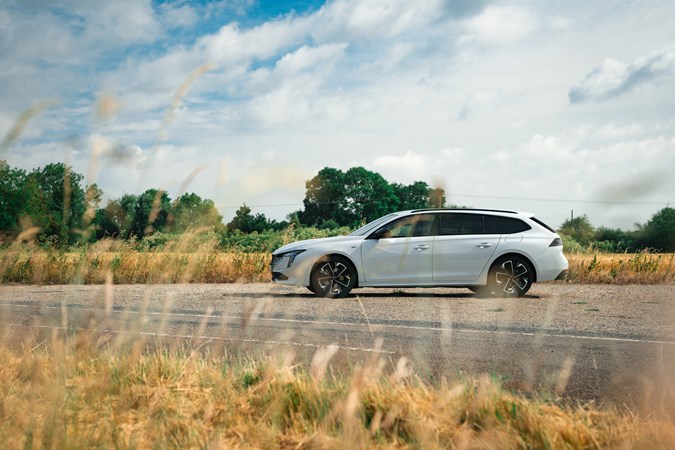
Update 2: First impressions
3k miles and two months in, what does James reckon to the 508 SW?
Long story short – there’s lots to like so far, but James needs to work harder on extracting the maximum all-electric range. As does Peugeot…
I’m now a couple of months into my time with the Peugeot 508 SW and have come to the conclusion that it is the best-looking mainstream estate car on sale today. The facelift has done its job and made what was an already striking design even easier on the eye. Incredibly, some of my very discerning and originally unconvinced friends have admitted they’ve fallen for its charms. But what else have I discovered?
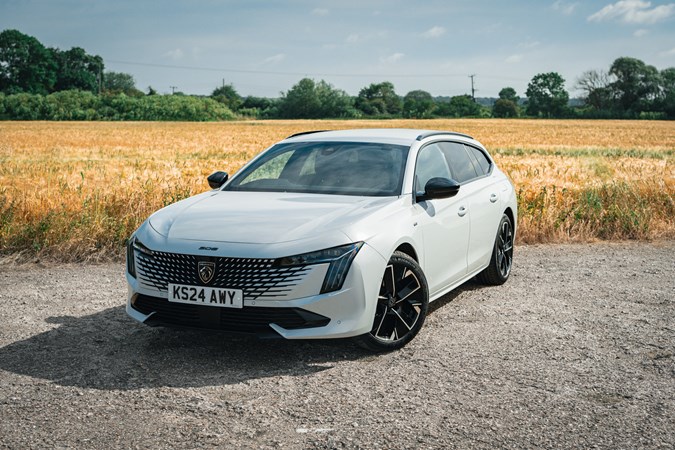
I’ve been running the 508 SW and it’s 1.6-litre plug-in hybrid engine during the summer months so far which should help with range, but the max indicated number I’ve seen so far is 24 miles. It could be better, but then, so could I.
I reckon if I drove super carefully, a figure above 30 miles would be in reach and not a million miles off the bottom end of the 34-mile WLTP claimed figure. I’ve also noticed an improvement in how the car looks after it’s EV range on long journeys – it doesn’t seem to use as much when travelling at high speed as when I first received the car.
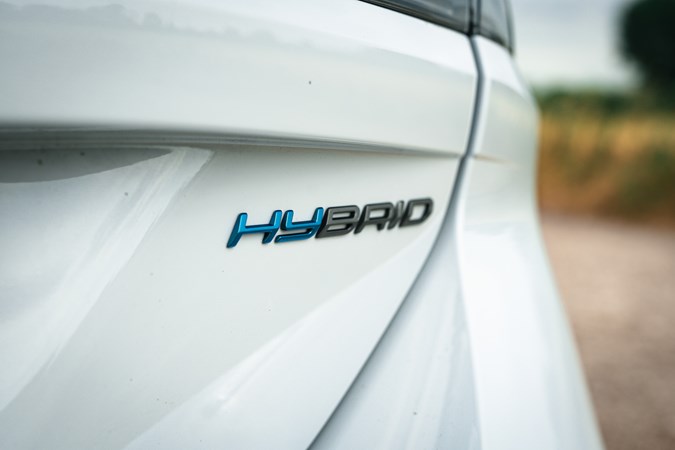
However, I’ve been looking at figures for the new VW Passat and Skoda Superb plug-in hybrids and each car claims all-electric ranges of 60+ and 80+ miles respectively. Rapid 50kW DC charging is also available, making me think that Peugeot’s PHEV tech needs an upgrade.
One thing that’s really grabbed me about the 508 SW is how easy it is to just hope in and go somewhere in it. Granted, that sounds ridiculous as otherwise what is the point of a car, but hear me out… It’s got a huge boot that’s accommodated everything I’ve thrown at it thus far, the turning circle is excellent (brilliant for town driving), it’s quiet on the move, the ride is good and it’s quick enough to press on when you need to.

Compared with the 408 I had before I’ve noticed a couple of differences. It’s more comfortable (although I definitely miss the electric seats) and the ride and refinement are better, yet I’m positive the 408 had more positive feeling steering. Not what you’d expect from the taller, heavier car.
A lot of people ask about the car, but I feel they do so with a degree of caution. They love the look of it – unanimously, in fact – but there’s a reticence because of a) perceived reliability issues and b) the price tag. People expect it to be expensive, but when I turn around and explain that it’s £50k with options, they’re shell-shocked.
In anyone’s book, it’s a lot of cash for a family estate with a 1.6-litre engine, but also the aforementioned Passat and Superb estates are similar money so it’s not exactly out of line with the competition. I’ll need to book at least one of those cars in to see which is better value.
Update 3: Engine and handling
James is relieved to be back in the 508 SW after a few days away…
Long story short – 508 SW does most things well, but there’s better cars out there for those after the best driving experience.
I’ve just spent 3 days doing a road trip in a £1,200 sports car built twenty years ago for an upcoming feature. It was loud, largely uncomfortable and definitely not relaxing. But it’s also been a great way of showcasing just how luxurious the 508 SW is to drive around in.
When driven at a leisurely pace with charge in the battery, it’s impressively comfortable and serene and even though the dampers are passive, not adaptive, the ride is a strong point – especially on long motorway journeys. I mention the dampers because, at this price point, it’s common to find cars with different suspension settings adjustable via menus. However, if done right – see my old Alfa Romeo Giulia Veloce long-termer – there’s no real need for them.
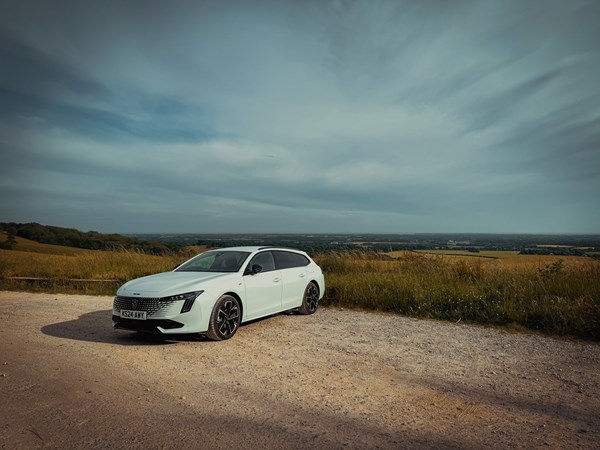
That said, I would like to see a little more ‘bite’ from the Peugeot when driven at a more enthusiastic pace. Granted, it’s family wagon and not a sports car (plus the additional weight from the hybrid system doesn’t help), but given how sleek and sporty the car looks from the outside, I was expecting a greater feeling of agility. Curiously, my previous long-term test car – a Peugeot 408 Hybrid – actually felt sharper to steer despite weighing more and having a higher centre of gravity. Hmmm.
The brake pedal is also an issue for me. Presumably because of the energy regeneration from the hybrid system when braking, the pedal feel is compromised and doesn’t inspire a huge amount of confidence. Fear not, if you stand on the brakes the car stops perfectly well, but measuring in the appropriate brake force in other scenarios can be difficult. Overall it’s a car that likes to be driven smoothly and – even though there’s actually plenty of grip and cornering ability – you’re best not pushing it beyond 7/10ths.
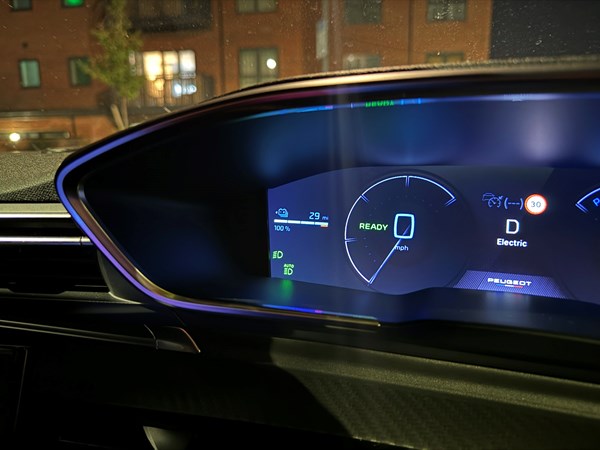
As for the powertrain, I hit a personal milestone recently and managed to get an indicated range of 29 miles (a figure I believe to be realistic) from the battery. This is very close to the bottom end of the estimated WLTP range (34 miles) and is far more useful than the 18 miles I was getting, at times, from my 408 Hybrid with the same powertrain. Interestingly, I’ve noticed the figure gradually creep up in the last couple of months without any change in driving style.
With the battery charged and an appropriate driving style used (smooth, not in a hurry), the powertrain is adequate. It’s relaxing and well-suited to the rest of the car. There’s enough oomph in all-electric mode to drive in towns and on motorways, but I’ve noticed that when coming off the power and then reapplying the accelerator (say, on approach to a roundabout), it feels like there’s ‘slack’ in the powertrain and you can get a clunky, delayed response. It’s not like a full EV where the power is crisp and instant.
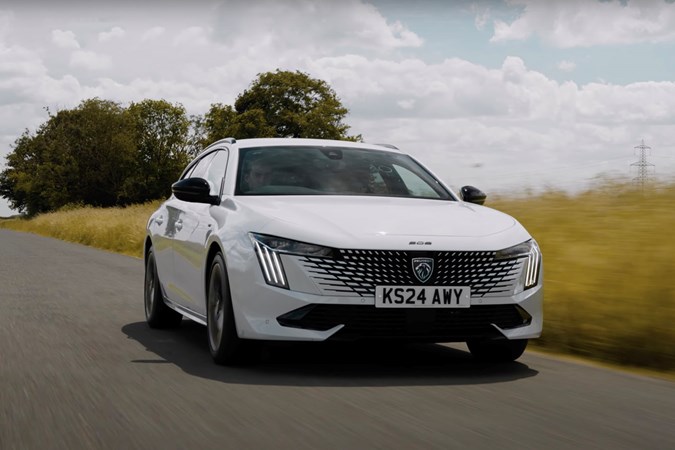
Overall, however, I’m still enjoying the charms of the 508 SW and do find myself frequently looking back over my should at it after I’ve parked up. From many angles, it’s a fabulous piece of design and one that Peugeot should be proud of. Have I mentioned that before?
Update 4: Practicality
It’s sleek and stylish, but is the 508 SW actually that practical?
Long story short – There’s larger and more practical estates out there, but the 508 SW holds its own and looks fabulous while doing it.
Over the last few months I’ve banged on about how good looking the 508 SW is to absolutely anyone that will listen. For me, its sleek lines and svelte design make it the most attractive estate car on sale today. Trouble is, that could be construed as an oxymoron.
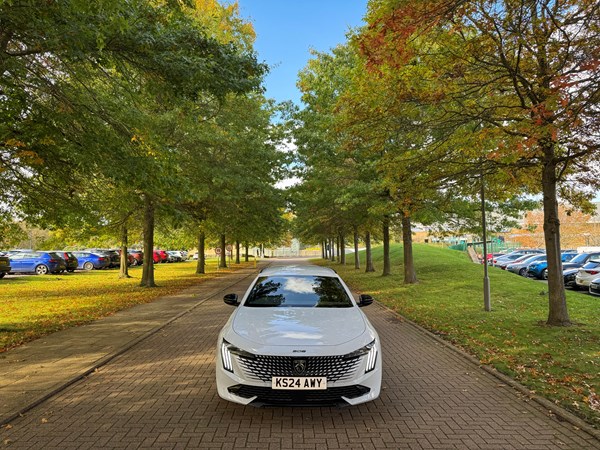
See, estates are supposed to be practical. Ask me to describe my earliest memory of an estate and I’d probably think of a big, boxy Volvo 940 – a car that didn’t appear to have single curved surface on it. Perfect for loading awkwardly shaped items and people.
My 508, however? Well with all that design flair what does it mean for the boring stuff that cars like the 940 famously excelled at?
Starting with the space up front, I’ve got zero complaints. The driving position can go plenty low or high enough and I’ve never felt uncomfortable on long journeys with ample adjustment in the steering wheel.
There’s also a good spread of storage space, from the capacious side door pockets to the deep area under the central armrest and further cubbies both on top and underneath the centre console. A wireless phone charging pad also features and sits in a logical position. Unfortunately, the small and compartmentalised glovebox spoils an otherwise near-perfect score.
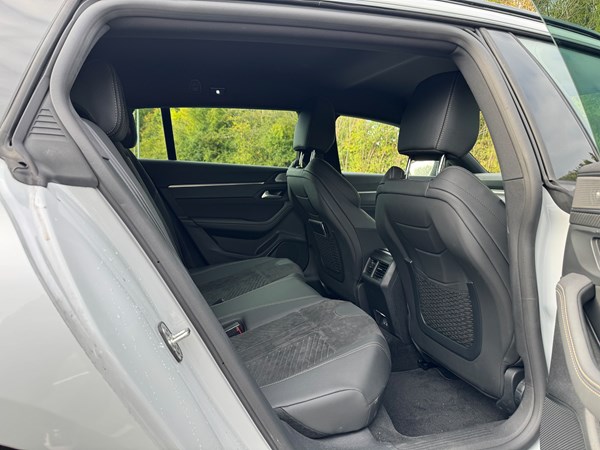
Space in the back is acceptable rather than stand-out. A couple of six-foot adults will fit, but they’ll find that their eye line is above the top of the window which does make the cabin feel claustrophobic. Leg room is reasonable, but it would be useful to have more space under the front seats for rear seat occupants to slide their feet.
Middle seat passengers should be happy enough, but note that the central tunnel means their feet will have to impinge on the space of those in the outer rear seats. Also, there’s no separate climate control zone in the rear, although you do get two USB A (not USB C, like those in the front) charging points.
Finally, boot space in the 508 SW is somewhat of a highlight for two primary reasons. The first is that at 530 litres (seats up) and 1,780 litres (seats folded down) it’s bigger than the Mercedes-Benz C-Class Estate, Audi A4 Avant and BMW 3 Series Touring.
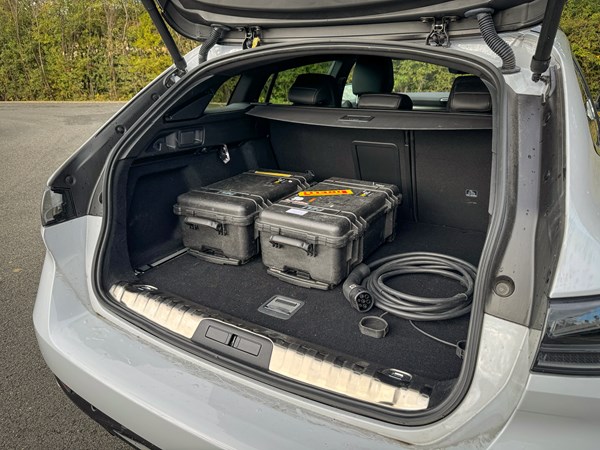
Secondly, the plug-in hybrid variant doesn’t lose any space compared with the straightforward petrol models – something that’s fairly uncommon given the packaging difficulties. Sadly, there’s no 40:20:40 split on the rear seats (only 60:40), but there is a ski hatch to aid with long items.
You’ll find space under the boot floor to store the Type 2 cable but it’s only just big enough and, honestly, I’ve always just chucked it in the main section of the boot – as I suspect most will. Meanwhile, the boot lid is electric, but getting the hands free function (where you wave your foot under the bumper) to work consistently has proved beyond me.
For rummaging around in the dark, a handy bootlid light is provided but unfortunately it’s come loose in my car and refuses to clip back in. Otherwise, build quality is holding up fine.
Update 5: Peugeot 508 SW vs Skoda Superb Estate
Skoda’s finest proves a serious rival for the 508
Long story short – The Superb Estate’s next-gen plug-in hybrid powertrain is a big step forward from the 508’s
I’m fast approaching the end of my time with the Peugeot 508 SW so thought I would book in a similarly priced alternative for a point of comparison. As while estate cars aren’t as common as they once were, there’s still alternatives out there for the price of the Peugeot.
Introducing, then, the Skoda Superb Estate with the 204hp 1.5-litre plug-in hybrid powertrain. In terms of price, the two cars are pretty much equal – the Peugeot coming in at £50,015 and the Skoda (in top spec L&K trim) at £49,200.
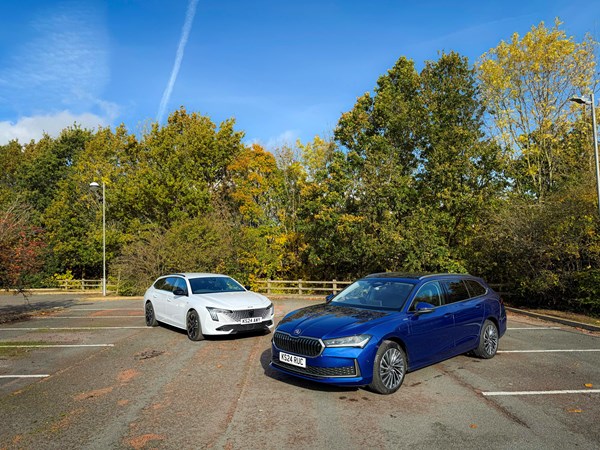
Starting with size and practicality, the Skoda has a clear advantage. It’s significantly longer (4902mm vs 4778mm) and as a result has more passenger space in the rear and a larger boot in five-seat configuration – 690 vs 530 litres seats up (it’s about equal with seats folded down).
Up front, the Peugeot’s more svelte and interesting cabin design edges it for me, however. I prefer the driving position, too, despite the controversially small wheel that you peer over rather than through. The Skoda does have better visibility and I’m a HUGE fan of the physical multi-function dials that adjust climate, volume, heated seats, drive modes and more.

However, I couldn’t fully enjoy the Skoda’s interface because of an annoying software glitch with the infotainment system that meant the screen kept going to the climate adjustment page while not touching any controls. Quite why it needs to do this given the info is already displayed on the dials is another question. What’s more, my phone kept disconnecting from Apple CarPlay. Given I’ve rarely had any issues with the Peugeot, it’s Stellantis 1 VW Group 0 when it comes to reliability.
What else I found eye opening was the plug-in hybrid powertrain on the Superb. The 1.6-litre petrol with 12.4kWh battery in the Peugeot was first unveiled on the 508 in 2019 and the gap in technology really shows. The Skoda uses a 20kWh battery and as a result claimed all-electric range is 79 miles. In reality, it’s possibly around 10 short of that depending on how you drive, yet it’s light years more than what the Peugeot can deliver.
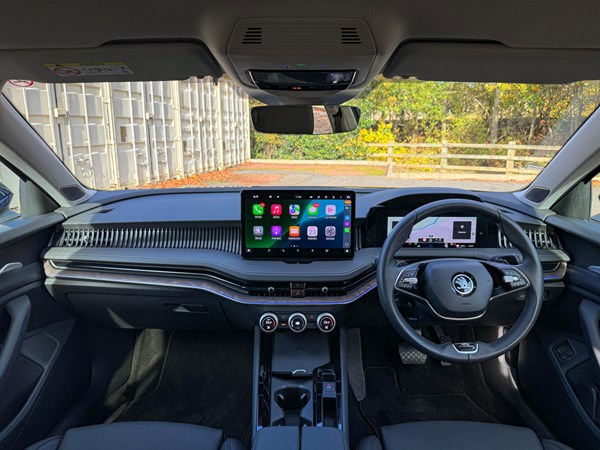
The Superb also has the ability to ‘fast charge’ with a maximum DC charging power of 40kW (80% recharge in as little as 26 minutes), whereas the 508 SW can only manage regular 7.4kW AC battery replenishment.
Perhaps most surprising, however, is that the near 1.9-tonne Skoda with 204hp isn’t any slower from 0-62mph (both around eight seconds) than the 1.8-tonne 508 SW with 225hp. In reality, the former’s snappier six-speed gearbox means it’s quicker to respond to bursts of throttle input and hard acceleration.
Otherwise, the lighter Peugeot does have the edge on handling and there’s also less road noise, yet the adaptive suspension on the Skoda gives a noticeable advantage on ride quality. I was also a big fan of the Skoda’s adaptive cruise control and active lane-keeping technology that was one of the best systems I’ve tried in a while.
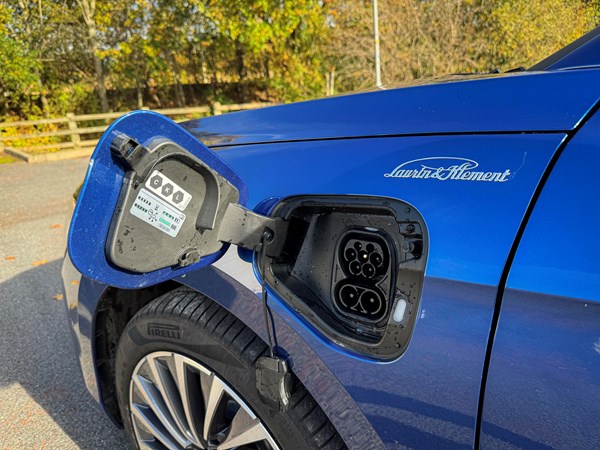
In summary, the 508 SW is – unsurprisingly – feeling its age on aspects such as technology and powertrain when compared with a newer rival such as the Superb Estate. As it stands, I’d struggle to recommend the Peugeot over the Skoda on that basis and Stellantis needs to readdress the balance with an updated powertrain.
Update 6: Goodbye
A fond farewell to the Peugeot 508 SW
Long story short – It’s not perfect, but I’m sad to see ‘my’ Peugeot 508 SW go back. Here’s why…
Sadly, I wasn’t around to say goodbye to the KS24 AWY – otherwise known as Peggy – when it rolled off my driveway for the last time. Still, I’ve gained some clear thoughts on what this car does well and what it does not over the last six months, so keep reading for my final verdict.
The first thing I want to talk about is the way this car looks. I’ve banged on about it endlessly in the reports above, but just to set the record straighter than a laser, this is the best-looking estate car on sale today. At any price point. Hats off to Peugeot’s designers.
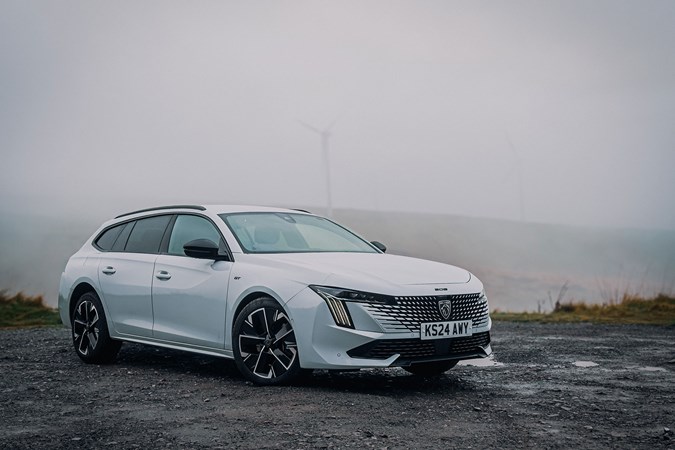
I also discovered that, in order to achieve this gorgeous design, Peugeot didn’t abandon the default USP of an estate – namely, practicality. Yes, you’ll find more space in the back of rival cars – the larger, but similarly priced Skoda Superb Estate I tried out being a prime example – but the boot space is bigger than alternatives from Mercedes, Audi and BMW.
And no, I never did get the optional Smart electric tailgate to open reliably by waving my foot. I don’t blame the car for this, however, as in nearly nine years of reviewing cars I’ve never been able to get the damn things to work consistently.
Speaking of options on the 508 SW, the Okenite White metallic paint (£650) looks absolutely mint when clean and really sets off the lines of the car. Recommended. As is the 7.4kW monophase on-board charger (£400) for its ability to cut charging times from 3hr 25 mins to 1hr 45 mins.
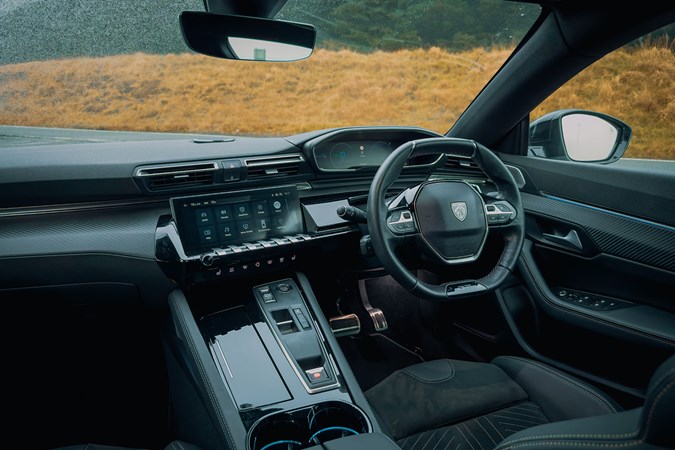
As for the most expensive options – the £900 Focal premium speakers system with wireless smartphone charging – I’m giving it a miss. Wireless phone chargers are a bit slow and always seem to make my phone incredibly hot, while the speaker system was OK rather than memorable.
Onto the cabin and, overall, I’m a fan. Especially after comparing it with the Skoda Superb. Yes, I loved the Skoda’s physical multifunction dials but as for the rest, the Peugeot wins out. There’s plenty of space, but it still manages to cocoon around you brilliantly and matches the swooping lines of the exterior. The infotainment, meanwhile, was reasonable while storage space was enough for my needs.
The general ride and handling of the car has also been a highlight. Long motorway journeys are a cinch, while around town the ride is rarely troubled – no doubt helped by wearing 18-inch wheels as standard.
Throw it into some corners, however, and there’s fun to be had. One of my last trips in the Peugeot was a schlep over to South Wales and it nailed every part of the journey, from the straight and fast M4 to more technical sections of road as I headed up into Brecon for the photographs you see into this report. For me, Peugeots should have something about them when it comes to ride comfort and handling and the 508 SW fulfils that.
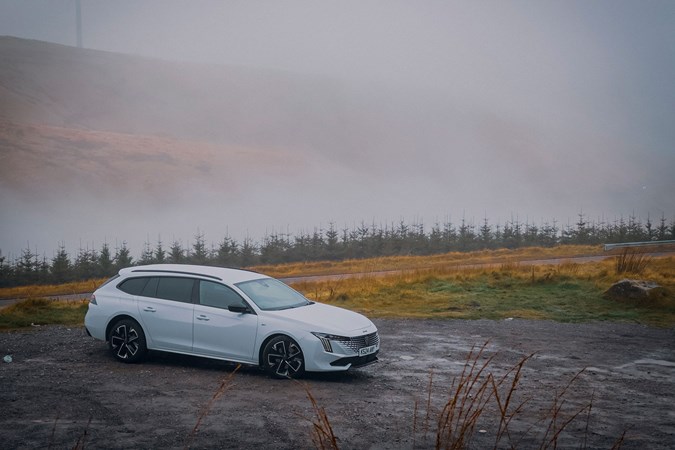
However, this is somewhat tainted by my primary gripe with this car. Namely, the powertrain. Having the Skoda Superb plug-in hybrid certainly put it into perspective. For starters, it doesn’t particularly like being worked hard. The eight-speed auto transmission prefers a nice, sedate drive and when it comes to straight line speed it rarely feels like you’ve got 225hp on tap.
What’s more, the regen element makes the brake pedal feel inconsistent (not just a Peugeot problem, admittedly) and the range (hovering around the 20 real-world all-electric miles mark) is well below where it should be. For me, the plug-in hybrid powertrain is out-of-date and lets the car down.
One final word on price, too. I’ve mentioned the Skoda Superb Estate plug-in hybrid a few times in this article and, arguably, it’s not a direct rival to the 508 SW as it’s considerably larger. However, the circa £50k price tag on this 508 SW means they line up very closely. In fact, the Peugeot’s pricing puts it up against some serious rivals from BMW and Mercedes-Benz that have a greater electric range.
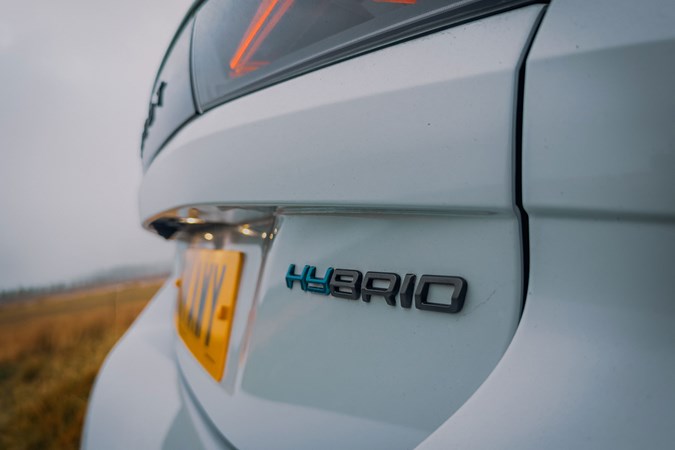
Should you buy one? If the meagre range doesn’t put you off and you can get a good deal, there’s plenty of reasons to like the 508 SW. But if you put it down to cold, hard maths encompassing electric range, price and space, there’s more effective options out there. Although, how many of us can honestly say we always buy cars with our head rather than our heart…
If you have any Peugeot 508 SW ownership impressions you’d like to share, please get in contact on X, Instagram or at james.dennison@parkers.co.uk. Alternatively, why not leave an owner’s review on our site?
| Peugeot 508 SW Hybrid 225 e-EAT8 long-term report | |
| Mileage | 9732 |
| Real-world average fuel economy | 51.9 mpg |
| Official combined fuel economy (WLTP) | 274.8mpg |
| Parkers mpp (Miles per Pound) calculation | 6.2 mpp |
| Car joined Parkers’ fleet | June 2024 |





